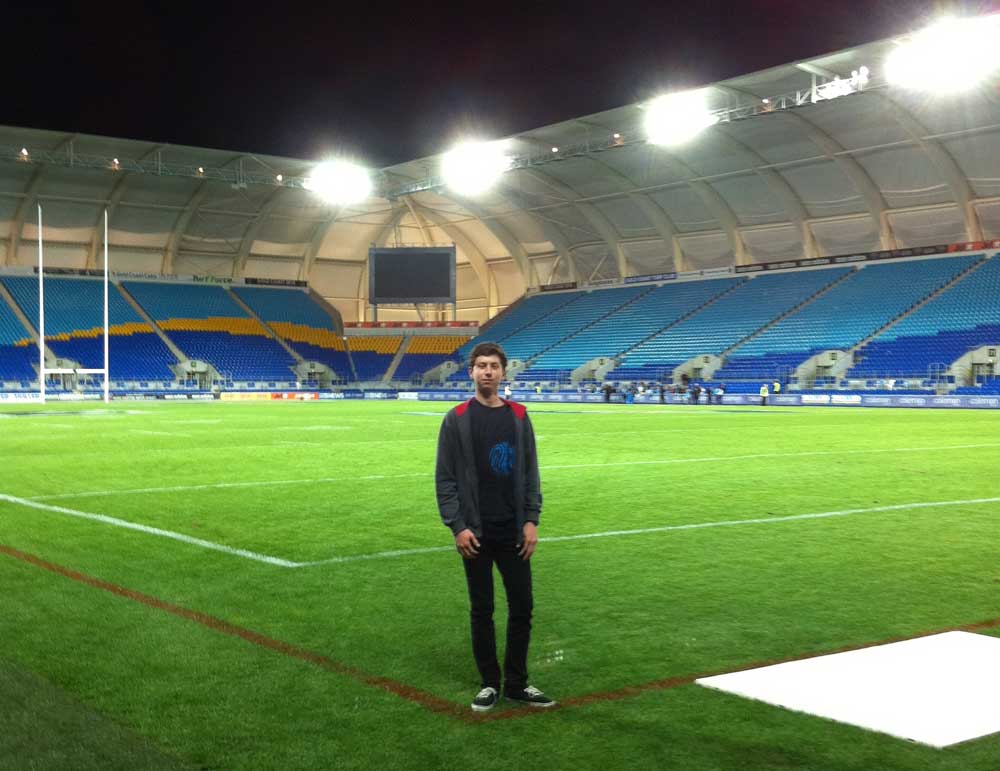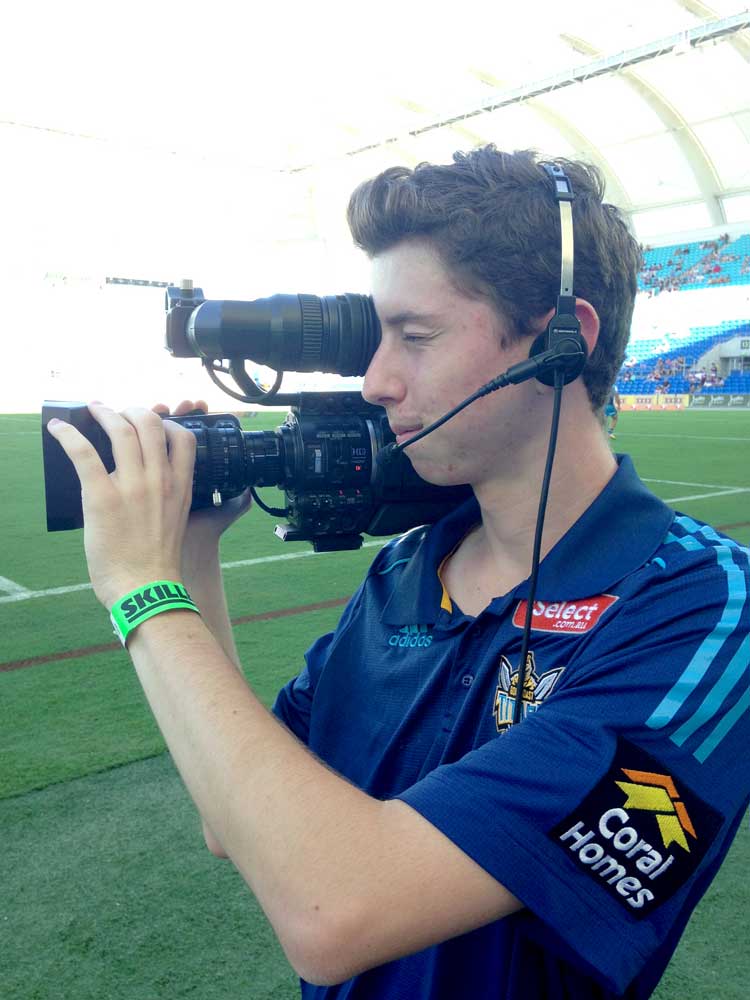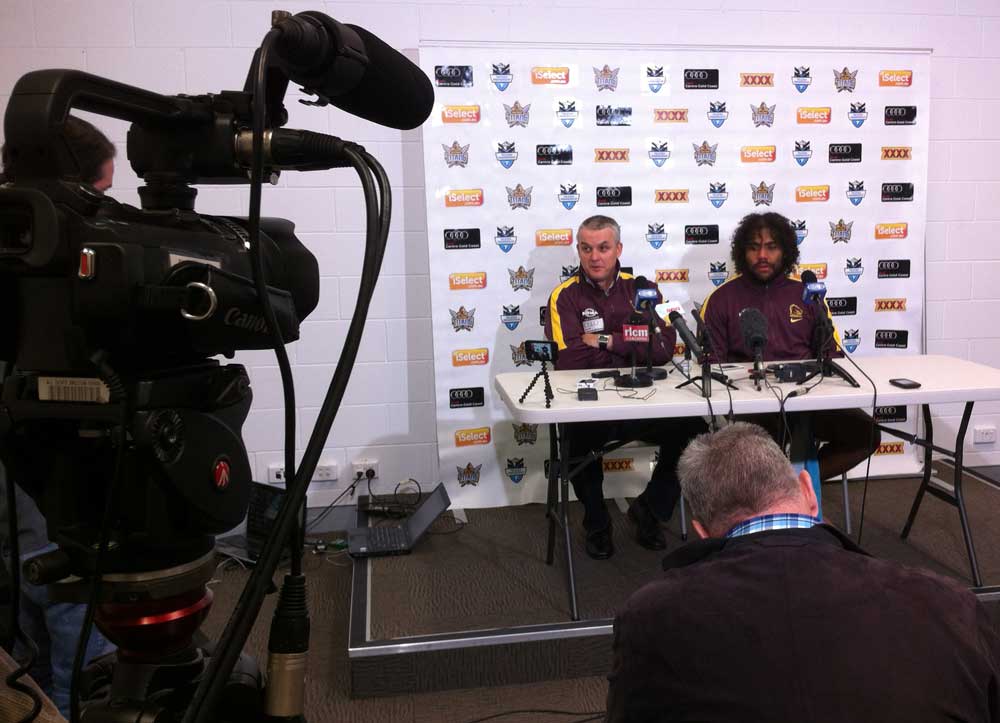Over the last few years I’ve spent a lot of time working for the Gold Coast Titans. I previously documented livestreaming an event but mostly I’m working on the field before the game or recording the post-match press conference for the website.
The Titans do a pre-game show called Titans TV which engages the crowd with different events each week. Examples include the kiss-me cam, catch the bomb, live bands, dance-offs, interviews, and of course plenty of cheerleaders. When I started in 2011 I was working as a camera assistant, following around the operators holding their long cables and making sure they didn’t get caught up or tangled. It’s a frantic job that involves lots of running around the field, sometimes while trying to untangle the big mess you’ve made, always while trying not to trip over the other cables that you’re weaving through. Basically the job is to be as reliable and autonomous as possible so that the camera operator can do their thing. They have a headset and the producers upstairs give them instructions, which I can’t hear, so often they will change direction or start sprinting seemingly out of the blue.

After a year and a half they must have decided I was reliable enough to become the person suddenly changing direction and sprinting out of the blue because they gave me a camera and my own camera assistant! I have spent the last year operating at most of the local games, and it’s a really good gig. There’s suddenly a lot more pressure on you, and you have to attend rundown meetings an hour before you actually need to start work, but paradoxically it’s way easier. You know before you even start exactly where you need to be and when. You have a producer between two operators who steps you through where to go next. There’s also a broadcaster in your ear who tells you if your shot’s too tight, too bright, if it’s good, if it’s bad. The camera assistant takes care of managing your hundred metre cable and how it interacts with all the other cables on the field. All you really have to do is press buttons and hold the camera steady.

The camera is some JVC broadcast camera (maybe the GY-HM750, or at least something similar). It’s big and heavy, but does a really good job at what it’s meant to do. All the professional features are there, like customisable buttons, powered 14x zoom, built-in shoulder mount, eyepiece with zebras and focus peaking, plus every port you could think of. I’m sure there are way more broadcast features that I can’t even appreciate.

The other job I had to oversee was capturing the post-match press conference of both teams to be uploaded to the website. It would’ve been awesome if I was a fan of the sport, as I got to meet quite a few team captains over time, but I don’t really follow it at all so the opportunities were wasted. Nonetheless it was interesting to see a professional press conference situation, and to notice the technological shift that occurred during my employment. When I started there were lots of mics on the table, tripods everywhere, and photographers with big lenses on monopods. By the time I finished most people were chucking their phones on the front table and hitting record. Fox still brought their broadcast camera but they were the only others. The reporters snapped away on their (other?) phones and there were no traditional cameras in sight. A lot can change in three years. The first year I worked there I was still shooting on tape. Thank goodness that changed.